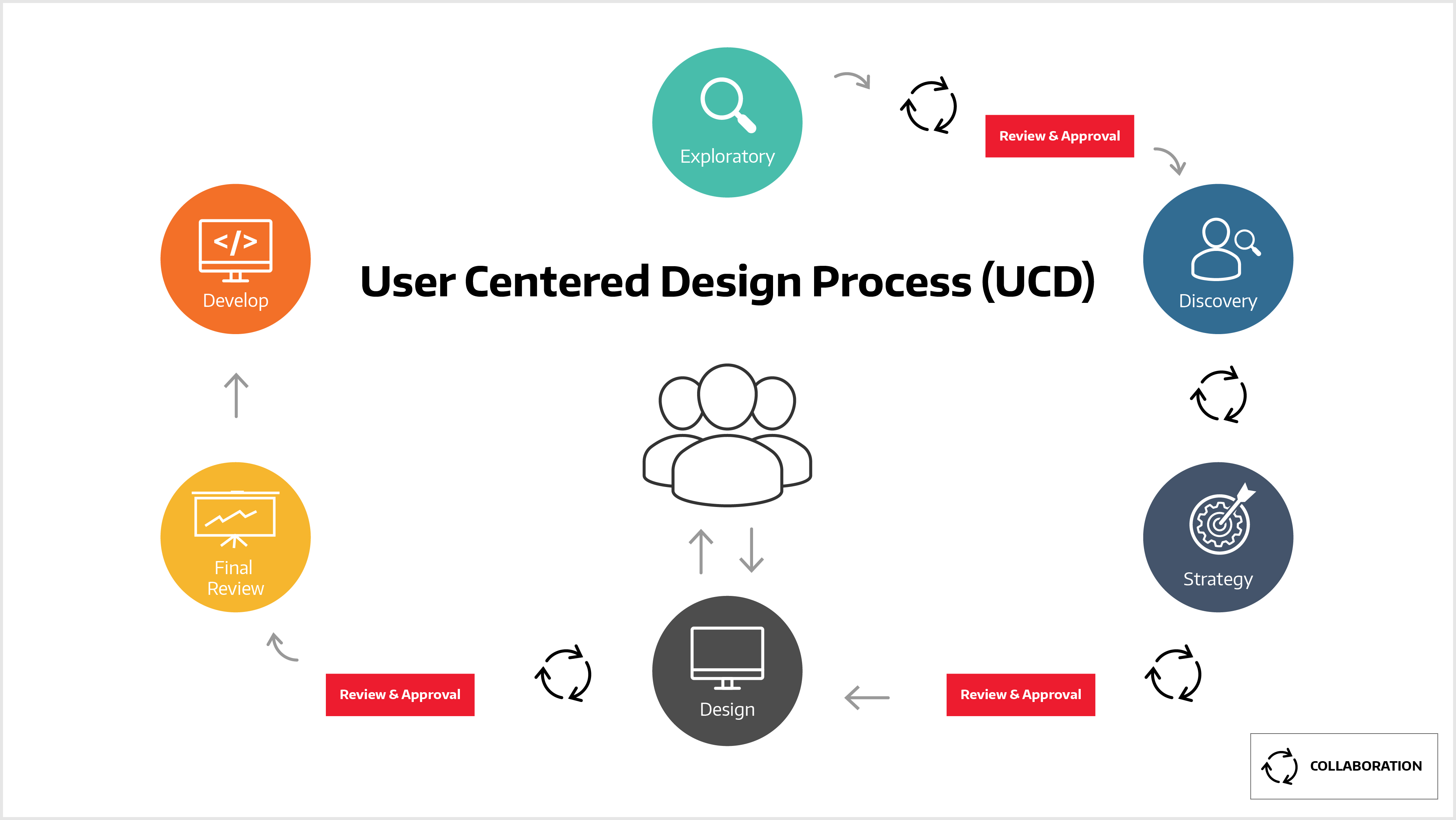UX Factory Brings User-Friendly Designs and Modernization to Federal Government

When you walk into a store, cross the street, or park your car, you are subconsciously going through a real-life example of user experience (UX).
In a broad sense, UX is how a person interacts with a digital product or service. It can include, as previously stated, a physical environment. This is why grocery stores are often laid out similarly to one another. It’s why patterns of raised bumps cover crosswalks to help the visually-impaired know where the sidewalk meets the road. And it’s why newer parking garages are equipped with color-changing lights to help you find open spots. UX is everywhere.
History of UX
UX isn't new. Iterations of what we call UX today have been around since World War II. It was originally called human factors and emerged from the study of how to improve the functionality and usability of manned systems. As computers came into being, human factors evolved into what was known as human-computer interaction (HCI), the first iteration of digital UX. The term wasn’t coined until about 1995 to define how humans interfaced with digital technologies.
The government has also implemented the 21st Century Integrated Digital Experience (IDEA) Act to provide the end user with quick, easy, secure, and accessible digital experiences. The act has eight specific requirements that public-facing websites and digital services must meet:
- Section 508-Accessible
- Consistent
- Authoritative
- Searchable
- Secure
- User-centered
- Customizable
- Mobile-friendly
UX practitioners constantly explore how to solve problems and improve the way others use the products or services they develop. Digital solutions are under constant scrutiny for their quality as emerging technologies challenge how practitioners make state-of-the-art capabilities as user-friendly as possible.
Why Invest in UX?
Our customers’ overall development efforts are more mature when they hit production, resulting in better user satisfaction upfront, rather than several iterations later, when they implement Good UX design and best practices. Engaging, useful, functional, and consistent designs enhance user satisfaction, and ultimately amplify the end-user perception of digital products.
The UX Factory helps customers meet these goals faster and more efficiently than other similar solutions because it is our single, central governance for our UX approach and consists of best practices, methodologies, reusable frameworks, and templates.
Leveraging CACI’s UX Factory can significantly save customers time and money by deploying solutions that are geared towards improving end-user satisfaction and usage. On a current contract, the UX Factory ran a heuristics evaluation framework on the customer’s data and information and reduced design and technical debt by 40-50%.
Processes and Frameworks Built with End Users in Mind

CACI’s UX Factory develops assets and artifacts for user research, design, and usability testing. It also deploys processes, methodologies, and frameworks for design assessments, evaluation, and user roadmaps. The most common methodology is a user-centered design model, which follows the following steps:
- Exploratory: UX Factory designers review requirements with the customer stakeholders, including accessibility and functionality requirements, and use heuristic evaluations to determine and benchmark a digital solution’s usability.
- Discovery: UX Factory user researchers and interaction designers conduct research and usability testing of the solution for UX quality and accessibility.
- Strategy: Practitioners develop personas, journey maps, and streamline user flows to improve consistencies and engagement. This includes developing use stories and cases that are carried over to developers.
- Design: UX designers create low- to mid-fidelity designs that can range from simple wireframes to interactive mockups and prototypes using UX tools.
- Usability Testing: UX designers and testers work with users to conduct usability testing on the wireframes and mockups matching the user findings from phase 2 discovery with the designs to ensure the best designs are being built. We conduct two to three iterations to maximize our overall best user-centric designs.
- Final Review: The solution undergoes rigorous review with all stakeholders
- Development: The UX practitioners then work closely with developers as the solution is built and put into production.
But the job isn’t done there. Continuous re-design, development, and data collection occur so designers can learn, rebuild, and retest digital solutions for optimal UX.
The UX Factory also provides UX Assessments for our programs to identify how to improve UX maturity and user interface (UI) design with client solutions. This includes a four-step process: defined understanding, design review, tech review, and then scoping out UX plan.
UX goes beyond just design; it’s a scientific way of solving problems and modernizing designs, geared toward a user-centric mentality. There are more ways to engage with digital solutions than ever before, between traditional computers, touch-based devices, and voice assistants, and the list continues to grow. As these capabilities evolve, UX will be more important than ever to ensure these marvels of technology are accessible and user-friendly.